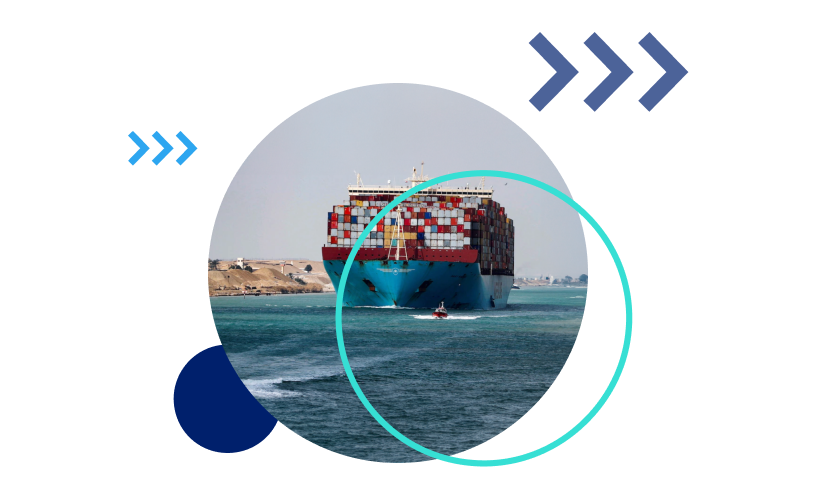Losing sleep over the thought of 10,000 containers sinking into the ocean each year? Well, take a deep breath, because in the vast world of global shipping, that number is just a drop in the ocean. To put it in perspective, a staggering 770 million shipping containers embarked on journeys across the seas in 2014 alone.
The odds may seem ever in your favor, but here’s the reality check—even the most reliable carriers are not immune to the unpredictable whims of the open waters. So, while the statistics might offer a comforting embrace, the truth remains that anyone, regardless of their shipping expertise, could find themselves in the unenviable position of having to file a freight claim due to lost or damaged goods.
What is a freight claim?
A freight claim is a legal instrument for demanding compensation when a carrier breaks the terms of the contract. This is more likely to happen when a sea carrier damages goods, as it is far less common for shipments to get lost or damaged when shipped by air (which is just another reason why you’ll pay a premium for air shipments). That said, insurance here is critical. Many carriers will have stipulations in terms and conditions that will net you minimum compensation for your shipment (usually in the ballpark of a couple of dollars per shipment) but booking your shipment with insurance will help get your actual product’s worth.
It’s important to remember that there is a time limit for filing a freight claim. You can usually find the time limit on the bill of lading or air waybill, so make sure you read the fine print.
Four steps to filing a freight claim:
Embarking on the journey of filing a freight claim involves a meticulous four-step process:
- Identifying the Goods: To kick off the claim process, precision is key. Gather comprehensive information about the specific goods that fell victim to damage or loss. The claimant is responsible for furnishing these details, after which the carrier steps in to formally identify the affected items. If you’ve been diligent in documenting your shipment details, armed with essentials such as your commercial invoice, this step should unfold seamlessly.
- Confirmation: With the information in hand, the carrier or forwarder swings into action, conducting a thorough assessment to confirm the veracity of the claim. This pivotal step ensures that there is a clear acknowledgment of the damages or losses incurred during transit. The carrier plays a crucial role in validating the claim and determining the legitimacy of the filed grievances.
- Valuation: A collaborative effort unfolds in this phase, involving both the shipper and the carrier. Together, they embark on the task of establishing the valuation of the damaged or lost goods. This step demands a careful examination of the extent of damages and a comprehensive assessment of the financial implications. The valuation process sets the stage for determining the compensation owed to the shipper for the incurred losses.
- Request for Payment: Armed with a validated claim and a clear understanding of the damages’ financial impact, the final step involves submitting the formal request for payment to the carrier. This marks the culmination of the process, as the shipper seeks reimbursement for the losses sustained during the shipment. The carrier, having completed their due diligence, then responds by processing the payment, bringing closure to the freight claim journey.
Navigating these four steps requires attention to detail, collaboration, and adherence to documentation, ensuring a smooth and efficient resolution to the challenges posed by damaged or lost goods in the complex realm of freight transportation.
Who can make a freight claim?
To submit a freight claim, you have to either be the legal owner (with a title) of the damaged freight, an entity accepting the risk of loss in transit, or a legal proxy. The claim has to be made to the carrier of origin or delivery. The claim should be sent to the claims manager at the carrier’s headquarters. For the most part, the forwarder should be able to support you with this.
A Useful Tip
It’s not a great idea to estimate the amount of your loss before reaching a final, verified calculation.
If you file a claim that estimates the loss at around $5,000, then some carriers will mail you a check for $5,000. Once cashed, the carrier isn’t liable for any additional losses. The best way to value your claim is to give the carrier a maximum potential loss, and then when the investigation concludes the claim can be amended.
Documents You May Need For Freight Claims
- Original travel document (bill of lading)
- Inspection reports
- Inspection requests
- Proof of value
- Temperature reports
- Impact report
- Lab analysis
- Packaging certifications
- Weight certificates
- Affidavits
- Carrier manifest (loading tallies)
- Notification of loss
- Waiver for inspection (by carrier)
Of course, not all of these documents are applicable in every case. For example, if your container was lost at sea, temperature documentation may be unnecessary.



